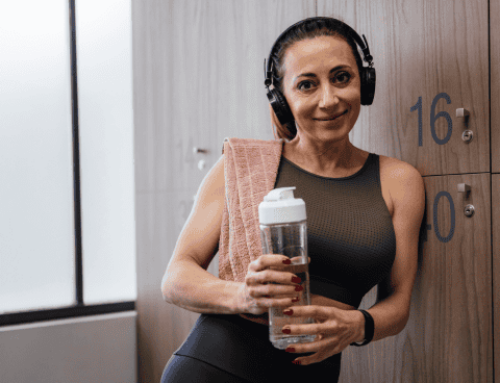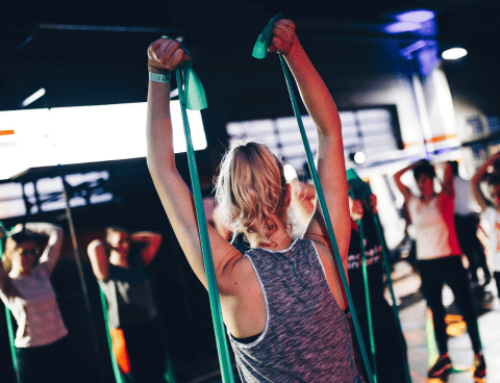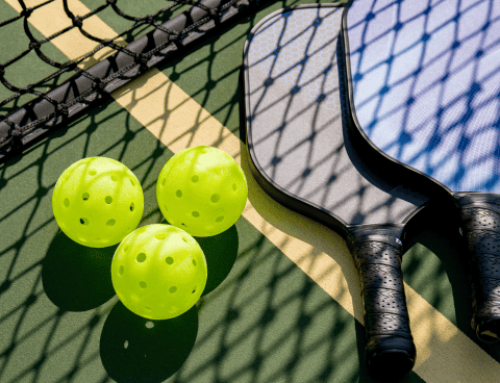Why Athletes Need to Follow the Principles of the Power Stack
Power and the ability to sprint over and over again win games. This leads to a very important question: How do you improve these abilities?
While it may seem as simple as just throwing in some jump training and conditioning, it is not that simple. Power and repeat sprint ability are at the top of what’s called the power stack. The law of the power stack is that you can only improve power and repeat sprint ability if you build them on a foundation of other important qualities.
It takes time to turn your body into a performance machine. In the fast-paced world of athletics, it is easy to give in to the pressure to skip levels. However, you have to respect the law of the power stack. You have to go in order. If you try to skip levels, you may succeed in the short term. However, you can also get hurt or hit a huge plateau far below where you want to be. Take the time, go in order and build each level of the performance stack. Reach your full athletic potential!
Level 1: Health
Effective training is built on a foundation of good health. As an athlete, if you don’t have your health, you have nothing. If you have any injuries or other health problems, work with a trusted healthcare professional to deal with these issues first.
Also, make sure you are doing all the simple things you already know you should be doing to stay healthy and recover as fast as possible. These include proper sleep, rest, stress management, soft tissue work, washing your hands, brushing and flossing your teeth, etc.
Level 2: Movement Quality
Physical Therapist Gray Cook explained this in his Performance Pyramid. The idea is that performance is built on a foundation of movement quality. If you don’t move well, you will never be able to actualize your potential and you will likely end up hurt. Basic movement competencies and proper exercise technique are the next level in the power stack. Also, at this level you want to work on your landing, jumping, stopping, starting, sprinting and cutting mechanics.
Level 3: Work Capacity
Once you are healthy and move well, it is time to build up your work capacity. This is your ability to handle work. Imagine for example that you have been sitting in a desk all school year and then you suddenly get an intense manual summer job. The first week is brutal because you don’t have any work capacity. However, after a few weeks, you build this up and can handle the work.
If you don’t have very good work capacity, you won’t be able to handle the volume of training need to build things like strength, speed and power. I like to start offseason programs with a base-building phase of a higher volume work. Performing many sets of loaded carries builds work capacity.
Note: At times athletes need to gain muscle or lose body fat. If you need body composition changes, this is where you do it.
Level 4: Relative Strength
This is your foundation for power, and if it is a small foundation (i.e., you are not that strong), you won’t get very powerful. You can also get hurt, as the best power exercises require a lot of strength to do safely and effectively. In addition, the stronger you are in relation to your body weight and size, the easier and safer it is for you to move your body around.
Level 5: Power
Once you are strong, you now have the foundation to get what you really need—power. Power is the ability to produce a lot of force in a very short amount of time. It is the combination of strength and speed. Power lets you out-sprint or out-jump your opponent.
If you play a collision sport, power is what allows you to knock your opponent off his/her feet. It helps you rapidly start, stop and cut. Power wins games. Once you have a base of strength, you can start to emphasize more power exercises such as: jumping, plyos, sprints, agility and explosive weight room movements.
Level 6: Repeat Sprint Ability
The final level of the physical performance pyramid is repeat sprint ability. This is being able to use your newly gained explosive power and speed over and over until the game is done and won. In the final phase of offseason training, the focus shifts to repeating fast, explosive movements with relatively short rest intervals. Preseason practices and scrimmages also play an important role here.
READ MORE:
[cf]skyword_tracking_tag[/cf]RECOMMENDED FOR YOU
MOST POPULAR
Why Athletes Need to Follow the Principles of the Power Stack
Power and the ability to sprint over and over again win games. This leads to a very important question: How do you improve these abilities?
While it may seem as simple as just throwing in some jump training and conditioning, it is not that simple. Power and repeat sprint ability are at the top of what’s called the power stack. The law of the power stack is that you can only improve power and repeat sprint ability if you build them on a foundation of other important qualities.
It takes time to turn your body into a performance machine. In the fast-paced world of athletics, it is easy to give in to the pressure to skip levels. However, you have to respect the law of the power stack. You have to go in order. If you try to skip levels, you may succeed in the short term. However, you can also get hurt or hit a huge plateau far below where you want to be. Take the time, go in order and build each level of the performance stack. Reach your full athletic potential!
Level 1: Health
Effective training is built on a foundation of good health. As an athlete, if you don’t have your health, you have nothing. If you have any injuries or other health problems, work with a trusted healthcare professional to deal with these issues first.
Also, make sure you are doing all the simple things you already know you should be doing to stay healthy and recover as fast as possible. These include proper sleep, rest, stress management, soft tissue work, washing your hands, brushing and flossing your teeth, etc.
Level 2: Movement Quality
Physical Therapist Gray Cook explained this in his Performance Pyramid. The idea is that performance is built on a foundation of movement quality. If you don’t move well, you will never be able to actualize your potential and you will likely end up hurt. Basic movement competencies and proper exercise technique are the next level in the power stack. Also, at this level you want to work on your landing, jumping, stopping, starting, sprinting and cutting mechanics.
Level 3: Work Capacity
Once you are healthy and move well, it is time to build up your work capacity. This is your ability to handle work. Imagine for example that you have been sitting in a desk all school year and then you suddenly get an intense manual summer job. The first week is brutal because you don’t have any work capacity. However, after a few weeks, you build this up and can handle the work.
If you don’t have very good work capacity, you won’t be able to handle the volume of training need to build things like strength, speed and power. I like to start offseason programs with a base-building phase of a higher volume work. Performing many sets of loaded carries builds work capacity.
Note: At times athletes need to gain muscle or lose body fat. If you need body composition changes, this is where you do it.
Level 4: Relative Strength
This is your foundation for power, and if it is a small foundation (i.e., you are not that strong), you won’t get very powerful. You can also get hurt, as the best power exercises require a lot of strength to do safely and effectively. In addition, the stronger you are in relation to your body weight and size, the easier and safer it is for you to move your body around.
Level 5: Power
Once you are strong, you now have the foundation to get what you really need—power. Power is the ability to produce a lot of force in a very short amount of time. It is the combination of strength and speed. Power lets you out-sprint or out-jump your opponent.
If you play a collision sport, power is what allows you to knock your opponent off his/her feet. It helps you rapidly start, stop and cut. Power wins games. Once you have a base of strength, you can start to emphasize more power exercises such as: jumping, plyos, sprints, agility and explosive weight room movements.
Level 6: Repeat Sprint Ability
The final level of the physical performance pyramid is repeat sprint ability. This is being able to use your newly gained explosive power and speed over and over until the game is done and won. In the final phase of offseason training, the focus shifts to repeating fast, explosive movements with relatively short rest intervals. Preseason practices and scrimmages also play an important role here.
READ MORE:
[cf]skyword_tracking_tag[/cf]










